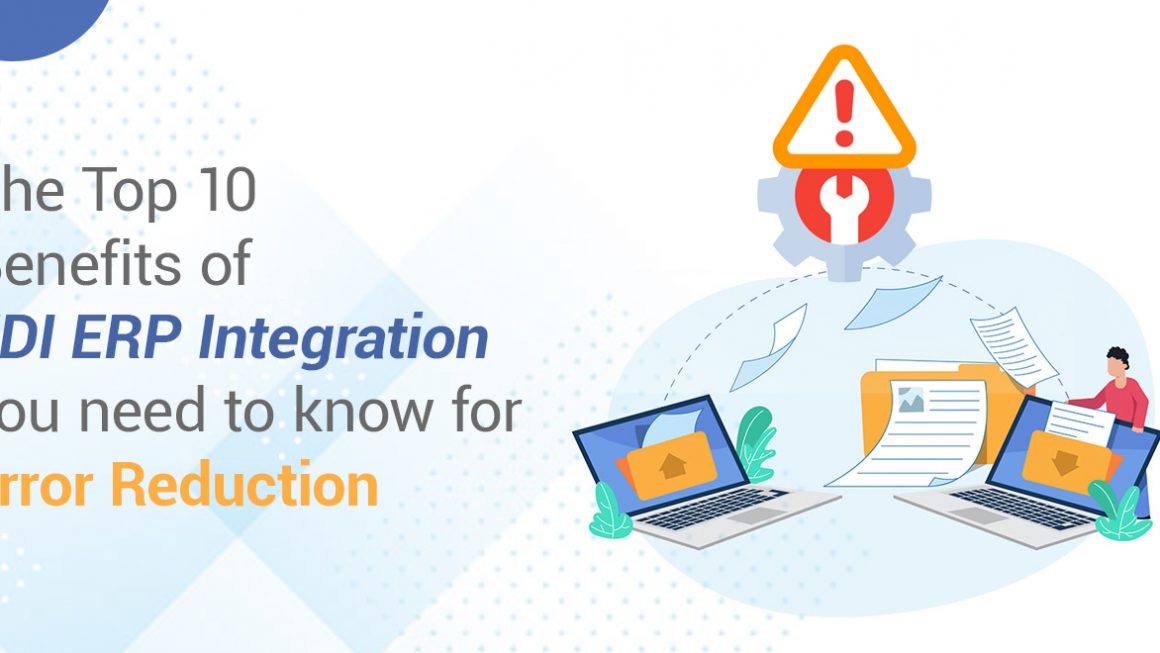Introduction
If we talk about supply chain management, the efficient exchange of information plays a pivotal role in ensuring seamless operations. Among all the tools provided by edi software companies facilitating this exchange. The Electronic Data Interchange (EDI) standard, specifically the EDI 856 – Advanced Shipping Notice (ASN), stands out. The businesses will strive for greater visibility, accuracy, and speed in their supply chain operations. In this blog, we will discuss EDI 856 and its significance in optimizing the supply chain. We will explore the top 10 unique specifications of EDI 856 that are important in streamlining the Advanced Shipping Notice process. From enhancing efficiency to minimizing errors, each specification plays a crucial role in shaping the future of supply chain dynamics.
What is EDI 856?
Electronic Data Interchange (EDI) has become the backbone of modern supply chain communication. The EDI integration streamlines the exchange of business documents between trading partners. Within the EDI framework, the Advanced Shipping Notice, commonly known as EDI 856, holds a critical position in the order fulfillment process.
At its core, EDI 856 is a standardized electronic document. Which is used to communicate detailed shipment information between suppliers and buyers. This information typically includes contents, packaging details, and shipping timelines. The primary goal of the Advanced Shipping Notice is to provide advance notification to the receiving party about the impending delivery. By transmitting key details before the physical goods arrive. The EDI 856 combined with edi-managed services allows for better planning, improved visibility, and enhanced collaboration throughout the supply chain.
Role of EDI 856 in the Shipping and Receiving Process:
Pre-shipment Communication
EDI 856 acts as a proactive communication tool, allowing suppliers to convey essential details before the physical shipment arrives. This includes information on the contents of the shipment, packaging specifications, expected delivery dates, and other relevant data. This proactive approach enhances transparency and coordination between trading partners.
Efficient Receiving Processes
The advance information provided by EDI 856 empowers the receiving party to prepare adequately for the incoming shipment. This preparation can involve allocating storage space, organizing labor resources, and ensuring that the necessary infrastructure is in place for handling the specific characteristics of the goods. Consequently, the entire receiving process becomes more streamlined, reducing delays and bottlenecks.
Data Accuracy and Reduction of Errors
Manual data entry is prone to errors, leading to discrepancies in inventory records and order fulfillment. EDI 856 automates the exchange of information, minimizing the risk of transcription errors and ensuring that the data transmitted accurately represents the shipped goods. This heightened accuracy contributes to more reliable inventory management, order processing, and overall supply chain efficiency.
Real-time Visibility
EDI 856 provides real-time visibility into the status of shipments. By transmitting timely updates on the progress of the shipment, including tracking information and any changes in delivery schedules, trading partners can make informed decisions. Real-time visibility is especially critical in today’s fast-paced business environment, where agility and responsiveness are key to meeting customer expectations.
Compliance with Retailer Requirements
Many retailers and large trading partners mandate the use of EDI 856 for suppliers. Adhering to these standards is not only a requirement for doing business with certain partners but also a strategic advantage. Compliance ensures smooth collaboration and integration into the larger supply chain ecosystem, fostering stronger business relationships.
Why is EDI 856 important?
The importance of the Advanced Shipping Notice (EDI 856) and the Electronic Data Interchange (EDI) standard in the complex web of contemporary supply chain management cannot be emphasized. This section describes why EDI 856 is essential for supply chain operations optimization:
A. Efficiency in Supply Chain Operations:
- Streamlined Processes: EDI 856 facilitates the seamless exchange of critical information, streamlining various supply chain processes from order fulfillment to inventory management. Electronic data interchange providers automate the communication of shipment details, so businesses can eliminate bottlenecks, reduce manual intervention, and enhance overall operational efficiency.
- Faster Order Fulfillment: The advanced notification provided by EDI 856 enables quicker and more accurate order fulfillment. With real-time information on incoming shipments, businesses can expedite the processing of orders, leading to improved customer satisfaction and potentially shorter order-to-delivery cycles.
B. Reduction of Errors and Discrepancies:
- Minimized Data Entry Errors: Manual data entry is susceptible to errors, which can have cascading effects on inventory accuracy and order fulfillment. EDI 856 automates the transmission of information, significantly reducing the risk of transcription errors and ensuring that the data exchanged is consistent and reliable.
- Enhanced Accuracy in Inventory Management: Accurate inventory management is a cornerstone of effective supply chain operations. EDI 856 contributes to precise inventory tracking by providing real-time updates on shipped goods. This accuracy not only minimizes stockouts and overstock situations but also enables businesses to make informed decisions based on up-to-date information.
C. Improved Visibility and Tracking:
- Real-time Visibility: EDI 856 offers real-time visibility into the status of shipments. This transparency allows trading partners and EDI consulting services providers to monitor the progress of goods throughout the supply chain. Enabling proactive decision-making and response to any unexpected events or delays.
- Effective Tracking Mechanisms: The detailed information provided by EDI 856, including shipment contents, packaging details, and tracking data, empowers businesses to implement effective tracking mechanisms. This not only ensures the traceability of goods but also enhances the ability to address issues promptly, fostering a more responsive and agile supply chain.
Top 10 Unique EDI 856 Specifications
The Advanced Shipping Notice (ASN), or Electronic Data Interchange (EDI) 856, is a vital tool for effective coordination and communication for supply chain management. The top ten distinctive EDI 856 standards are presented in this part, each of which contributes differently to improving accuracy and efficiency. Let’s have a detailed look.
1. Accurate Shipment Identification
This ensures the precise identification of shipments, including unique identifiers such as shipment numbers, order numbers, and tracking information. Accurate identification minimizes the risk of confusion and mismanagement, enabling seamless tracking and traceability throughout the supply chain.
2. Detailed Item Descriptions and Quantities
This requires a comprehensive breakdown of the items within a shipment, detailing quantities, weights, and any variations in packaging. Detailed item descriptions enhance inventory accuracy, aid in demand planning, and contribute to the optimization of storage and handling processes.
3. Packaging Information
Packaging details, including dimensions, weight, and packaging types. These are specified to provide a comprehensive understanding of how items are grouped and shipped. This specification assists in warehouse space allocation, and transportation planning, and ensures that goods are handled appropriately throughout the supply chain.
4. Handling Unit Information
The specification mandates information on handling units, such as pallets, cartons, or containers, and their contents. By detailing handling units, this specification optimizes storage, facilitates efficient loading and unloading, and aids in the effective management of goods in transit.
5. Shipment Dates and Times
Clear communication of shipment dates and times ensures alignment between the suppliers. The recipient regarding when the goods will be shipped and when they are expected to arrive. Timely information enables businesses to plan labor, allocate resources, and optimize warehouse operations.
6. Carrier and Routing Information
Outlining the carrier details and the planned route for the shipment. Accurate carrier and routing information aids in real-time tracking. Allowing businesses to monitor shipments and respond proactively to any deviations or delays.
7. Unit of Measure and Quantity in Each Pack
Defined as the unit of measure for each item and the quantity contained in each pack. Standardizing units of measure facilitates consistency in inventory management and supports accurate order fulfillment.
8. Warehouse Location Information
Warehouse location details specify where items are stored within the supplier’s facility or distribution center. This specification aids in efficient warehouse management, reducing the time required for picking and packing. It comes under edi web services.
9. Special Handling Instructions
Any special handling requirements, such as temperature sensitivity or fragility, are communicated. Clear instructions ensure that goods are treated appropriately throughout the supply chain. Minimizing the risk of damage and ensuring compliance with regulatory standards.
10. Compliance with Industry Standards
This adherence to industry-specific standards and guidelines, including any regulations imposed by trading partners. Compliance with industry standards fosters harmonious collaboration and reduces the risk of errors.
Challenges in Implementing EDI 856 Specifications
Although Electronic Data Interchange (EDI) 856 adoption has several advantages for supply chain operations, there are still difficulties in putting its standards into practice. If companies want to make full use of the Advanced Shipping Notice (ASN). Then EDI support services must identify and resolve these obstacles by implementing the Complete EDI Solutions. The common issues with implementing the EDI 856 requirements are discussed in this section.
Data Synchronization:
Ensuring that data exchanged through EDI 856 aligns accurately with the internal systems of both the sender and the receiver can be a significant challenge. Establishing robust data synchronization processes and regular audits helps maintain consistency and reduce discrepancies between systems.
Trading Partner Variability:
Different trading partners may have varying EDI 856 requirements, making it challenging to maintain standardized processes. Establishing clear communication channels with trading partners, understanding their specific requirements, and implementing flexible EDI systems can address this challenge.
Integration with Existing Systems:
Integrating EDI 856 with existing Enterprise Resource Planning (ERP) or Warehouse Management Systems (WMS) can be complex and time-consuming. Employing middleware solutions or leveraging EDI providers with seamless integration capabilities can facilitate a smoother integration process.
Staff Training and Awareness:
Ensuring that staff at both ends of the supply chain are adequately trained and aware of EDI 856 processes can be a barrier. Implementing comprehensive training programs and providing ongoing support. This can help employees understand the nuances of EDI 856 and foster successful adoption.
Cost Implications:
The initial investment and ongoing maintenance costs associated with EDI 856 implementation may pose financial challenges for some businesses. Mitigation: Conducting a cost-benefit analysis, exploring scalable solutions, and considering the long-term efficiency gains can help justify the investment.
System Upgrades and Compliance Changes
As technology evolves, system upgrades and changes in compliance standards may necessitate adjustments to EDI 856 processes. Staying informed about industry changes, regularly updating systems, and collaborating with EDI service providers.
Resistance to Change
Employees and stakeholders may resist transitioning from traditional processes to EDI-based systems. Implementing change management strategies and Best EDI Solutions, highlighting the benefits of EDI 856, and creating a culture of adaptability can mitigate resistance.
Scalability Issues
EDI 856 systems may face scalability challenges as transaction volumes increase. Choosing scalable solutions, regularly assessing system performance, and optimizing processes for efficiency.
Testing and Validation
Thorough testing and validation of EDI 856 implementations are crucial, although can be time-consuming and complex. Implementing robust testing protocols, collaborating with trading partners on validation processes, and leveraging testing tools.
Security Concerns
Transmitting sensitive shipment information electronically raises security concerns, particularly in the context of data breaches. Implementing secure data transmission protocols, and encryption methods, and regularly auditing security measures.
Conclusion
The Advanced Shipping Notice (ASN) – Electronic Data Interchange (EDI) 856 is a crucial tool for efficiency, openness, and cooperation. As we come to the end of this, EDI 856 criteria and the difficulties that come with putting them into practice. This electronic document is essential to changing how companies handle their supply chains.
The insights obtained from comprehending EDI 856 criteria and the related problems serve as a compass for informed decision-making as firms seek for excellence in supply chain management. However, by utilizing this electronic document to its full potential, organizations may create a strong, flexible, and future-ready supply chain ecosystem in addition to meeting their immediate operational demands. EDI 856 is a game-changer in the supply chain management industry, upending the norms of efficiency and cooperation in the fast-paced world of commerce where speed and accuracy are critical.



